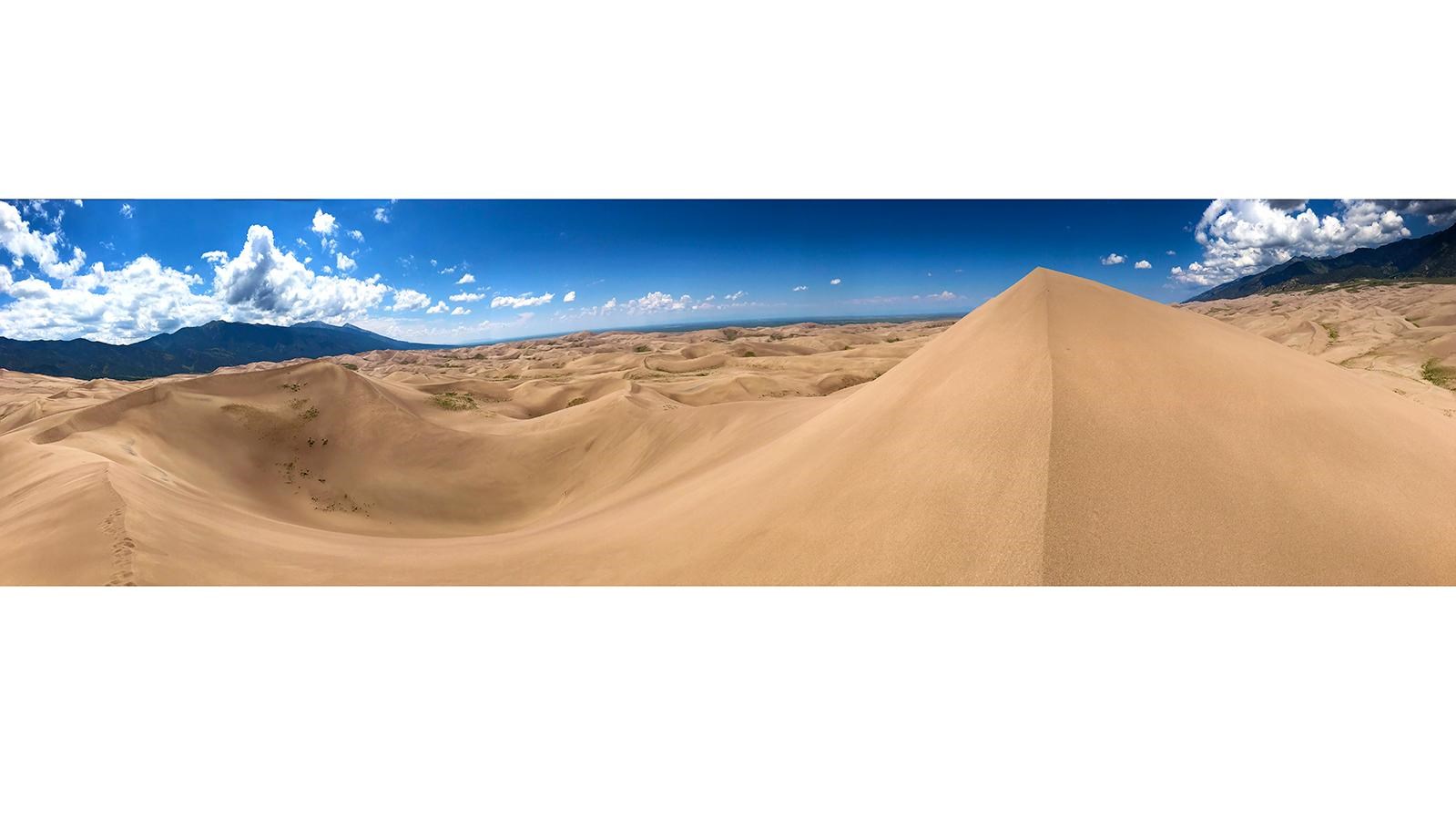Last updated: May 1, 2025
Place
Hidden Dune

NPS/Patrick Myers
Quick Facts
Location:
Near the center of the dunefield
Significance:
One of the two tallest dunes in North America
Designation:
National Park and Wilderness Area
Amenities
1 listed
Scenic View/Photo Spot
Hidden Dune is currently tied with Star Dune as the two tallest dunes in North America at 741 feet/225 m. Hidden Dune is named for its remote location in the dunefield, where it is not visible from most of the main visitor day use areas. It is even hidden from much of the high first ridge of dunes. A false summit (at left in photo) hides the actual summit for much of the hike to Hidden Dune.
GPS coordinates for Hidden Dune summit:
37.775916, -105.531912
Plan on 7 miles (11 km) round trip over 6 hours, starting from the main Dunes Parking Lot. Hike north/northwest to reach it. With high-clearance 4WD, you may also begin your hike at Sand Pit or Castle Creek Picnic Areas on the eastern side of the dunefield.
During summer, plan your dunes time for early morning or evening to avoid sand surface temperatures of 150 degrees F, or thunderstorms with lightning and wind. From November through April, snow falls on the dunes about once per week, and cold temperatures prevail. Wind is possible in any season, mainly when storm fronts are coming or going. Spring is the windiest season, especially during the afternoon.
Wear sturdy footwear year round; boots with long pants work best to keep sand out of your shoes.
Discover unusual insects, plants, wildlife tracks, ripples, and sand grains of every color. In warmer months, watch for one of 7 species of endemic insects, found nowhere else in the world, that are specially adapted to the extreme environment here.
GPS coordinates for Hidden Dune summit:
37.775916, -105.531912
Plan on 7 miles (11 km) round trip over 6 hours, starting from the main Dunes Parking Lot. Hike north/northwest to reach it. With high-clearance 4WD, you may also begin your hike at Sand Pit or Castle Creek Picnic Areas on the eastern side of the dunefield.
During summer, plan your dunes time for early morning or evening to avoid sand surface temperatures of 150 degrees F, or thunderstorms with lightning and wind. From November through April, snow falls on the dunes about once per week, and cold temperatures prevail. Wind is possible in any season, mainly when storm fronts are coming or going. Spring is the windiest season, especially during the afternoon.
Wear sturdy footwear year round; boots with long pants work best to keep sand out of your shoes.
Discover unusual insects, plants, wildlife tracks, ripples, and sand grains of every color. In warmer months, watch for one of 7 species of endemic insects, found nowhere else in the world, that are specially adapted to the extreme environment here.
